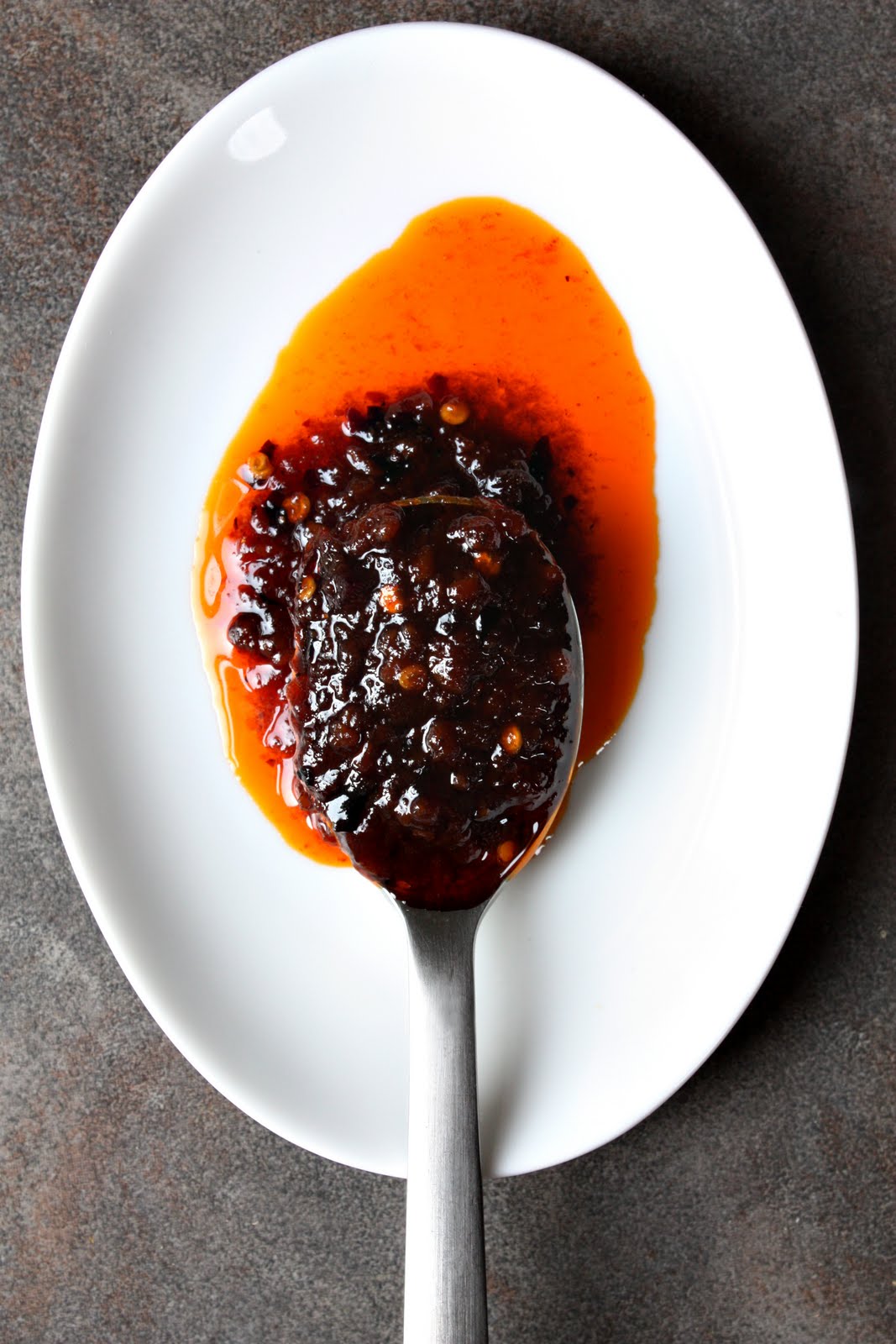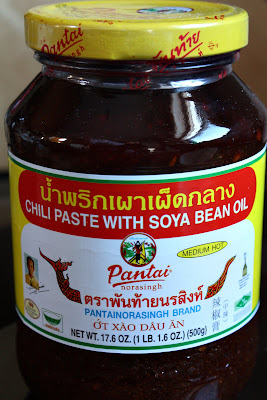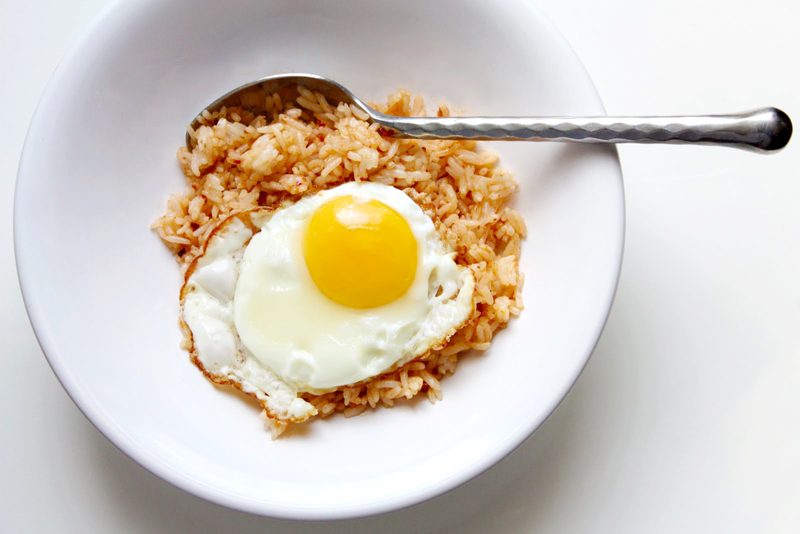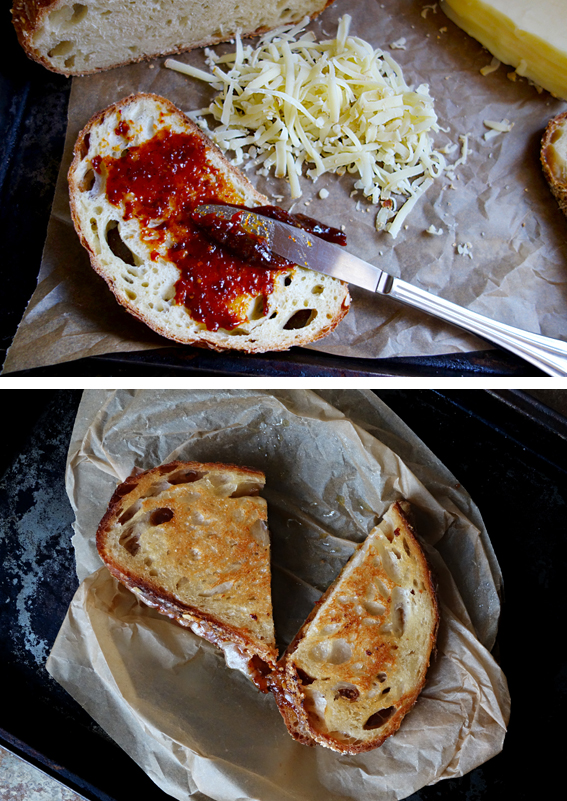
Nam Prik Pao (RTGS: nam phrik phao), น้ำพริกเผา, is one of the most — if not the most — versatile composite ingredients in Thai cooking that I can think of. It is intense and complex, but not in an in-your-face kind of way; it also features pretty much all of the tastes associated with traditional Thai food sans the usual herbs. Each spoonful packs so much flavor, and a little goes a long way.
Believe me when I say that I hate telling people what to do or what not to do. But in this case, I consider familiarity with Nam Prik Pao and how to use it to be necessary for, you see, this condiment permeates modern Thai cuisine. If you’re a Thai food enthusiast, or on your way to becoming one, and you haven’t made an acquaintance with this ingredient, please allow me the pleasure of introducing to you Nam Prik Pao, the “secret arsenal” of Thai restaurants worldwide, a pantry staple in Thai households, and your new best friend.
What Is Nam Prik Pao?
There’s no agreement as to the best English designation for Nam Prik Pao. Being a nam prik, it certainly belongs to the chili relish category along with the 105,896 other kinds of nam prik in the Thai cuisine (Added Feb 18, 2019: Gee, a writer at the Bangalore Mirror didn’t realize the number here is spoken in jest to exaggerate the innumerable number of iterations of Thai relishes. Now I’ve been quoted—without verification—as saying there are exactly 105,896 kinds of Thai relishes in existence. Sigh…). But it’s also a condiment, used as a dip and a spread. It’s consumed straight from the jar; it’s also used as a cooking ingredient. Nam Prik Pao is, as I’ve said earlier, very versatile.
Nam Prik Pao is almost always referred to as roasted chili paste or chili paste in oil. Some call it chili jam or roasted chili jam which I think is more specific, less ambiguous, and more consistent with what it really is. While “roasted chili paste” is not wrong, I personally find it to be unclear. After all, I can give you a whole list of other kinds of Thai nam priks that can be called roasted chili paste that have no similarities to Nam Prik Pao and aren’t used in the same manner. And chili paste in oil? It could refer to the roasted chili in oil condiment they put on the table for you at most Chinese restaurants, and we all know that kind of chili paste in oil is nothing like Nam Prik Pao.
Nam Prik Pao is jam-like in many ways. It’s made out of the pulp and seeds of a fruit, chili. The fruit along with other ingredients are puréed and cooked down to jam-like consistency. It’s also sweet in flavor. The seafood products in it may make some uncomfortable in calling Nam Prik Pao a jam. But whether or not the presence of seafood precludes something from being called a jam is debatable. For now, I consider it a savory jam until a good argument against it comes along.
topped with a fried egg – one of my favorite rainy day meals
What is in Nam Prik Pao?
Chilies, garlic, and shallots form the bulk of this semi-sticky paste along with some seafood (dried shrimp and shrimp paste). Nam Prik Pao is fried in vegetable oil and flavored with fish sauce, palm sugar, and tamarind paste.
This is something that vegetarians and vegans who frequent Thai restaurants may want to keep in mind: just because you ask for tofu or vegetables instead of meat doesn’t mean that you won’t get meat products in your Thai restaurant dishes. Shrimp paste is found in pretty much every curry, and fish sauce is, of course, omnipresent. And if your spicy stir-fry (or Tom Yam) contains Nam Prik Pao (most likely identified as “roasted chili paste” on the menu), you’re eating seafood.
How to Use Nam Prik Pao:
If you grew up or are now living in a Thai household, you certainly don’t need me yakking on and on about what Nam Prik Pao is or how to use it; in fact, you’re probably munching on Nam Prik Pao-smeared toast or Nam Prik Pao-pork floss buns in front of the computer as we speak. Me? I’m eating — and please don’t call my cardiologist — pork rinds dipped in Nam Prik Pao, one of the classic Thai snack combos and I’m as happy as can be, pork crumbs on my keyboard notwithstanding
But if you, like most of my American friends, didn’t grow up with Nam Prik Pao, you may be surprised to learn that even though you’re still not quite sure what Nam Prik Pao is, you’ve most likely consumed tons of it by way of your favorite Thai restaurant dishes. Have you had Tom Yam? Some versions of Tom Kha Gai, perhaps? Spicy clam and basil stir-fry? If you detect a sweet, slightly tangy, slightly fishy, a bit smoky taste in the stir-fry sauce at your favorite Thai restaurant, it’s very likely that we got Nam Prik Pao lurking in the background.
Recipes using Nam Prik Pao abound and vary, but here are some ideas that serve as a point of entry to create that complex, I-don’t-know-what-the-heck-is-in-it flavor you love so much in some Thai stir-fries, salads, and soups.
- Add a tablespoon of Nam Prik Pao to every 1/2 cup of Bruno. That’s it. That’s the easiest way to start cooking with Nam Prik Pao. If you like your stir-fry spicy, add fresh chilies to it. For fun, throw some fresh herbs into the mix: a handful of Thai basil or holy basil, some torn and bruised kaffir lime leaves, etc.
- Add Nam Prik Pao to your Tom Yam or Tom Kha.
- Add some Nam Prik Pao to a Thai salad that’s usually seasoned simply with lime juice and fish sauce. Try pig ear salad or fried egg salad with some Nam Prik Pao added to the dressing. Sublime.
- Make fried rice as you normally do with some Nam Prik Pao (about a tablespoon per 2 cups’ worth of rice) stirred in while the rice is still in the wok, then taste it and see your socks being knocked off right before your eyes. Nam Prik Pao fried rice with shrimp is just spectacular; you’ve just got to try it.
- Mix cooked rice with some Nam Prik Pao, season to taste with fish sauce, and top it with a fried egg or Thai-style omelet.
- Treat Nam Prik Pao as you would a spread and incorporate it into the items that you normally eat. Nam Prik Pao grilled cheese sandwich is my favorite.
Nam Prik Pao from Scratch?
For beginners, I highly recommend that you start out with commercial Nam Prik Pao. The only brand I have with me right now is Pantainorasingh which happens to be one of the most widely available ones out there. So here’s — without implied endorsement of, connection to, or compensation from this manufacturer — what Nam Prik Pao looks like in a jar. (Besides, I’ve been wanting so much to tell you the story of Pantai Norasingh, a 17th century Siamese hero who has apparently inspired the brand name.

The reason I suggest that you start out with commercial Nam Prik Pao is because Nam Prik Pao is one of those things where the chasm of quality between homemade and commercial isn’t extremely vast, especially if you use it as an ingredient in a stir-fry sauce or to accent a soup like Tom Yam. (Some people may not agree. If you’re one of those with ultra-discerning taste buds that can tell whether the Nam Prik Pao in your Tom Yam is homemade or commercial and can’t tolerate the use of commercial Nam Prik Pao, please feel free to quit reading at this point.) Besides, I strongly believe that those who are not familiar with Nam Prik Pao should know first what it tastes like as well as which heat level best suits their taste1 before they attempt to make Nam Prik Pao from scratch at home. That way, you go into it knowing exactly what to shoot for.
Making Nam Prik Pao is not at all difficult, but it is a somewhat labor-intensive activity. Even in my ultra-traditional Thai household, we made Nam Prik Pao only once in a while. Even my paternal grandmother, who grated her own coconut which she grew in her own garden and made curry paste from scratch every single time she made a curry, rarely made her own Nam Prik Pao. This is because even though Nam Prik Pao does not require a long list of ingredients, it does require that each ingredient be prepared separately before they’re merged together. Having a kitchen with good ventilation is also key for, you see, we’re talking about an ingredient with a pretty intense scent. Pleasant. But intense.
But if you’re really interested in making your own Nam Prik Pao, here’s my Nam Prik Pao recipe from scratch through two different methods.
Kasma Loha-unchit has recommended a few brands here.
Also, if you read Hebrew, check out more information on Nam Prik Pao by the great Thai Food Blog.
Anger Burger uses Nam Prik Pao in Tom Kha Gai and grilled cheese sandwich.
The Shrone uses Nam Prik Pao to make Thai-Mexican pork taco filling.
The Spiced Life makes Nam Prik Pao fried rice.
1 Most brands have three levels of heat available: mild, medium (hot), and hot. As a Central Thai, my heat tolerance is quite low, so even medium is a bit too hot for me. But, you see, Nam Prik Pao isn’t supposed to be super hot; it doesn’t need to be. The key is the salty-sweet-sour balance, not how many chilies you can pack into it. Too much heat, in my opinion, prevents you from being able to appreciate said flavor balance.









55 Responses to Nam Prik Pao (น้ำพริกเผา): Thai Chilli Jam – Secret Ingredient in Thai Spicy Stir-Fries, Salads, Etc.